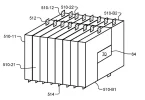NASA’s Mars helicopter, Ingenuity, has set a new flight record on the red planet. On its 59th flight just a few days ago, the drone-like machine reached an altitude of 20 meters, beating its previous record, set in December last year, by 6 meters.
NASA’s Jet Propulsion Laboratory (JPL), which is overseeing the mission that also involves the Perseverance rover, shared news of Ingenuity’s latest achievement in a social media post on Tuesday: The flight appeared to be geared solely toward pushing Ingenuity to a new height record as it landed in the exact same spot from where it ascended.
The extraordinary device has come a long way since its maiden flight on the distant planet in April 2021 when it hovered a mere 3 meters above the Martian surface for 39.1 seconds in a flight that confirmed for the first time that it was able to get airborne despite Mars’ very thin atmosphere.
Since then, Ingenuity has stayed in the air for as long as 169.5 seconds in a single flight, flown as far as 2,325 feet (709 meters) without touching the ground, and zipped along at speeds of up to 15 mph (6.5 meters per second). Earlier this month, JPL revealed that Ingenuity had reached 100 minutes of total flight time on Mars, a figure way beyond what anyone had been expecting as the original mission goal was merely to prove the machine’s flightworthiness.
But over the course of 59 flights, Ingenuity has impressed the JPL team not only with the way that it’s comfortably handled a range of missions but also with its ability to recover from various technical issues that it’s experienced along the way. The helicopter’s performance has been so remarkable that it’s been able to assist the ground-based Perseverance rover, grabbing aerial shots that have been useful for planning the rover’s driving routes across Jezero Crater, which it’s exploring for signs of ancient microbial life. Taking what it’s learned from Ingenuity, NASA wants to build more advanced versions of the flying machine for future missions to Mars and possibly beyond.











